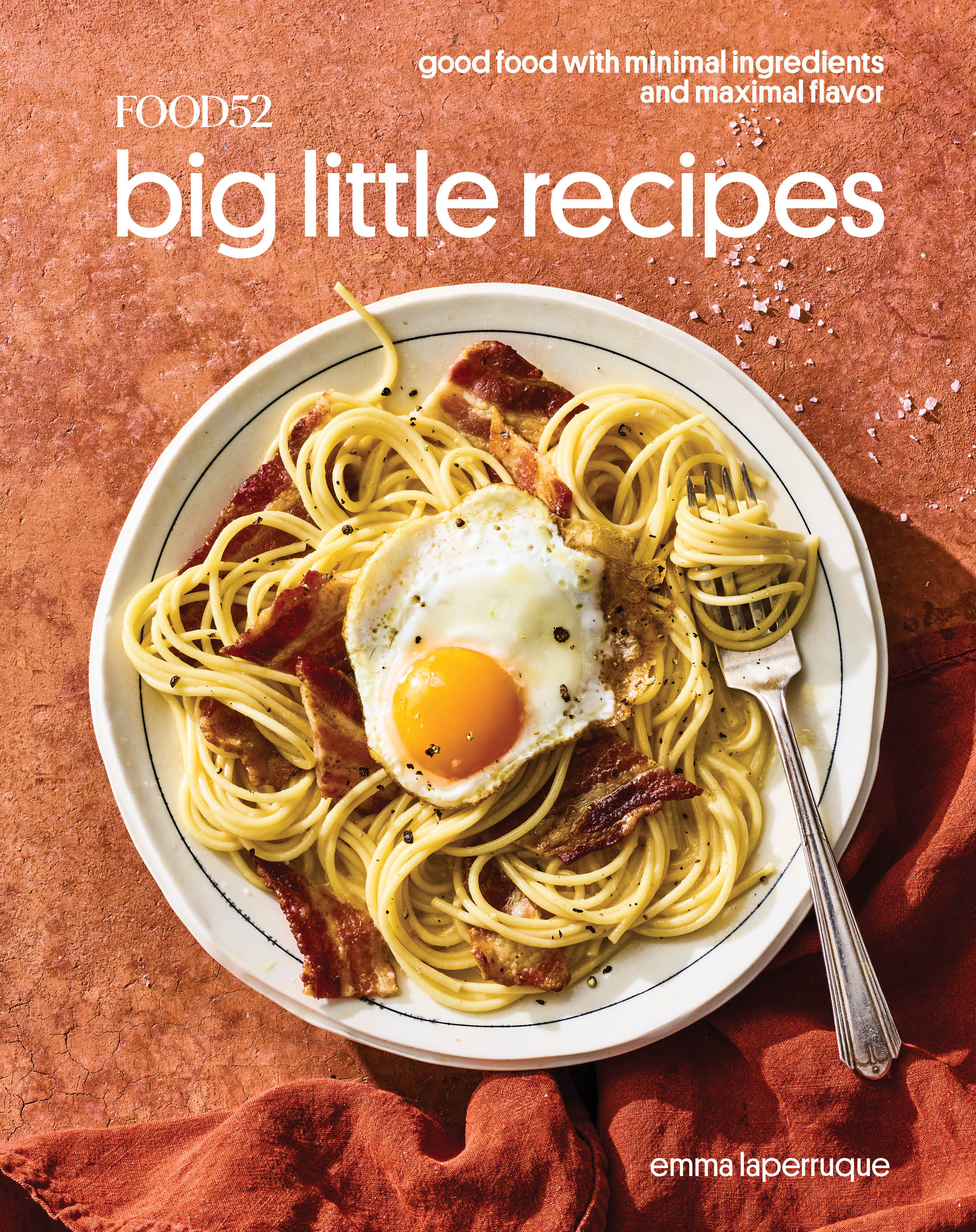A Big Little Recipe has the smallest-possible ingredient list and big everything else: flavor, creativity, wow factor. Psst—we don't count water, salt, black pepper, and certain fats (specifically, 1/2 cup or less of olive oil, vegetable oil, and butter), since we're guessing you have those covered. Today, we’re making 3-ingredient dumplings inspired by matzo balls.
Like bitter herbs and haroset, matzo is a meaningful food that Passover wouldn't make sense without. Eaten by enslaved Jews hastily fleeing Egypt, matzo—also known as “bread of affliction”—is a flatbread that has not been given time to rise.
Nowadays, Jewish families eat matzo every spring to remember our ancestors’ redemption and struggle. Unlike other Jewish dishes—cream-cheesed bagels, jelly-stuffed doughnuts, salty latkes, and saucy brisket, to name just a few—matzo is unarguably, infamously, hopelessly bland.
So we futz with it. The simplest strategy is a thick schmear of butter and plenty of salt. You also could cover it in chocolate, fry up an eggy scramble, or even make spanakopita. But my all-time favorite is matzo ball soup.
Like many cultural traditions, this recipe is ripe for debate. Should there be vegetables like carrots, parsnips, and celery (for what it’s worth, my mom says yes), or just matzo balls and broth (à la this Genius version)? Should the dumplings be big or small, floaters or sinkers, spiced or left alone? There is no right answer here—just a lot of loudly voiced opinions.
Somewhat ironically, the precursor to the matzo ball didn’t include matzo at all. It was made of bread—one of several foods that’s off-limits during the eight days of Passover. As Joan Nathan writes in The 100 Most Jewish Foods:
Matzo balls began as the German knödel, a bready dumpling. Jewish cooks in the Middle Ages first adapted the dumplings to add to Sabbath soups, using broken matzo with some kind of fat like chicken or beef marrow, eggs, onion, ginger, and nutmeg.
Be it matzo or bread, the reward is the same: something spoonable, slurpable, and enormously soothing. When I was growing up, my mom didn’t just make matzo ball soup for Passover; she made it to ease our transitions back to school, or if my brother or I were sick. Whatever the ailment, there wasn’t a better medicine in the world.
When I have no matzo around—like now, even though Passover starts tomorrow—this soup fills that role. As with knödel, the dumplings are bread-based, though the type of bread is up to you. Sourdough, whole-grain, or seedy loaves will produce more flavorful dumplings. What I usually end up with though, is a mix—I collect bread odds and ends in the freezer, and, once the container starts to overflow, make dumplings.
It goes without saying that the inclusion of Pecorino cheese isn’t traditional, but it is, ahem, delicious. Parmesan is a good substitute in a pinch (and in a pinch really seems to be the phrase of the moment, doesn’t it?).
In the same spirit, the vegetable here is up for grabs. Maybe it’s a couple handfuls of arugula, or a scoop of frozen peas, or a handful of chopped asparagus. What’s most important is that you pick one, just one. After all, the dumplings are what we came for.
Ingredients
| 2 1/4 |
cups (169 grams) fresh bread crumbs, plus more as needed (see Author Notes)
|
| 4 |
large eggs
|
| 1/2 |
cup (56 grams) ground or finely grated Pecorino Romano, plus more to taste
|
| 1/4 |
teaspoon freshly ground black pepper, plus more to taste
|
| 6 |
cups (1.36 kilograms) chicken broth, preferably homemade
|
| 1 |
kind of spring greenery (see Author Notes)
|
| 2 1/4 |
cups (169 grams) fresh bread crumbs, plus more as needed (see Author Notes)
|
| 4 |
large eggs
|
| 1/2 |
cup (56 grams) ground or finely grated Pecorino Romano, plus more to taste
|
| 1/4 |
teaspoon freshly ground black pepper, plus more to taste
|
| 6 |
cups (1.36 kilograms) chicken broth, preferably homemade
|
| 1 |
kind of spring greenery (see Author Notes)
|
This post contains products that are independently selected by our editors and writers, and as an Amazon Associate, Food52 would earn from qualifying purchases.






Join The Conversation